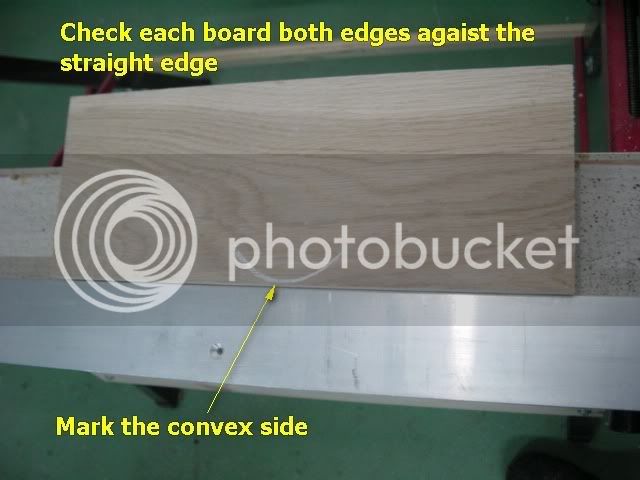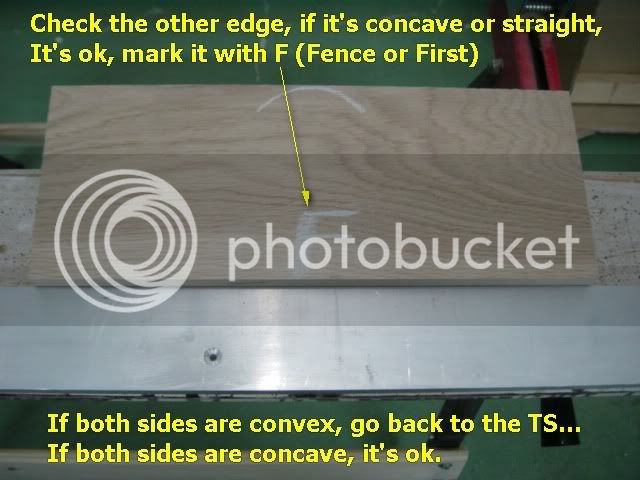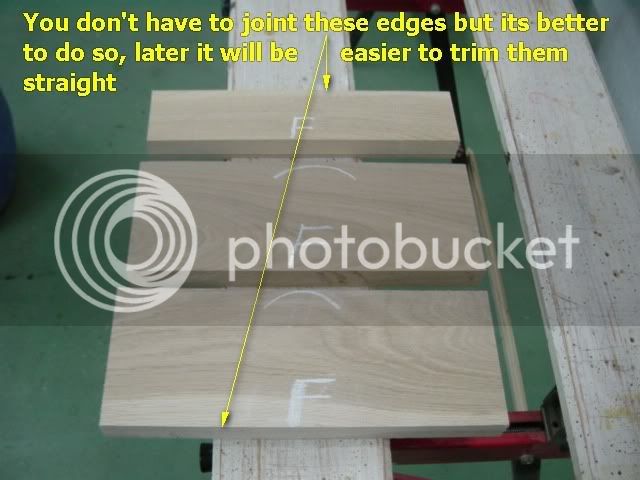Digit":g2ok7g7c said:
But I find one point that is essential that has not been mentioned. The side that is running on the temporary fence must be either dead straight or concave. If it is neither the side being machine can never be straight and the chance of a 'dig in' is greatly increased.
Roy.
You are correct Roy
The 3 pictures are from very old post that I posted here but, with the "pressure" that I got from the "safety police" I removed all the pictures.
Here are the 3 first pictures from that post..
As for the other ways suggested, I can see two groups...
1. Hand tools
2. BUY a jointer
As for hand tools - First I would like to say that for me, a tool, is not a tool if....it is not connected to a cord or battery

I think that all the guys that can make a beautiful tight glue line with a hand plan are sure that "if I can - everybody can" well, I'm sorry but I cannot...maybe I could if I would exercise a lot but the purpose of my hobby is not to "pass the time" but to see some "fruits" after short time...
Do you remember the old computers that you had to know DOS to operate them ? at that time not many people had computers because is was complicated for them to operate it and only the ones that wanted to get a job, learnt those "computer languages"...
But, after Bill introduced Windows...even people without knowledge are operating them very easy...
So maybe 20 or more years ago, you had to study "woodworking with hand tools"....because machines where very expensive and not so available at that time and, work some one month on a Cutting board that today, without any special skills, many can do it in very short time...
About buying a jointer of any other tool/machine...well, first I have to have the money and second, the space and, if I (or the OP) want to joint at the way that I've shown (or the OP shown), it means that...or I don't have the money, or, I don't have the space, or, both...
But if somebody want's to give me a present an "Altendorf"...I promise to find the space for it :lol:
Best regards
niki









































